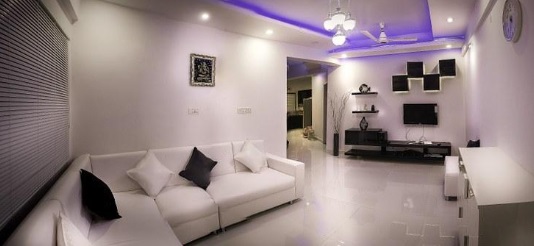 Light emitting diode bulbs are not a new technology. Although LED lights are making waves in the residential and commercial lighting industry, many people are still missing out on the benefits of using LED lights for their homes. Perhaps one of the reasons why people choose to avoid using LED lights is the unfamiliarity of terminologies surrounding this type of lighting. The key to maximising the benefits of LED lighting is to select the right model for your home. Here is a breakdown of some of the common misconceptions about LED lighting and how to avoid getting discouraged by them.
Light emitting diode bulbs are not a new technology. Although LED lights are making waves in the residential and commercial lighting industry, many people are still missing out on the benefits of using LED lights for their homes. Perhaps one of the reasons why people choose to avoid using LED lights is the unfamiliarity of terminologies surrounding this type of lighting. The key to maximising the benefits of LED lighting is to select the right model for your home. Here is a breakdown of some of the common misconceptions about LED lighting and how to avoid getting discouraged by them.
LED lights are brighter and harsher for homes
One of the myths about LED lighting is that it is only suitable for commercial areas because these tend to be too bright or harsh. On the contrary, LED lights come in a variety of brightness levels ranging from warm to cool. If you know what you are looking for, you are likely to find an LED bulb suitable for every room in your home. Suppliers like eco-lights.com provide buyers with a variety of options to make shopping for LED lights much more accessible.
Distinguish between the wattage and lumens of a bulb
To determine the brightness of a light bulb, you need to look at the lumens and not wattage. Although both properties have an impact on how bright a light is, the wattage essentially pertains to how much power an LED bulb has to consume to reach a certain brightness level. For both properties in question, a higher lumen and wattage rating typically indicates that it produces brighter light.
LED lights are expensive
When the technology was relatively new, LED lights used to be more expensive. Nowadays, however, LED lights are affordable. If you want to save more money, you can purchase in bulk or get a package directly from a contractor for a lower wholesale price.
The savings are not significant
Some people think that it is not worth switching to LED lights because the savings are not significant compared with the initial investment for installation. But it is estimated that by replacing at least four of the most commonly used lights inside your home, you can save up to £75 a year on electricity. Therefore, the more lightbulbs you replace, the more savings you’ll end up making.
LED lights are not dimmable
Earlier predecessors of modern LED lights didn’t come with additional features. However, those days are long gone, and modern LED lights come with all the bells and whistles to create excellent ambient lighting. A favourite LED lighting feature used in homes is the option to dim and brighten LEDs at will. This feature comes in handy for bedrooms and entertainment areas.
Another useful feature of LED lighting is the option to have a movable fixture in which you can adjust the bulb to focus the light beam on a particular section of the room. This is suitable for study rooms and in kitchens where you can zone in lighting to focus on what you are doing without brightening the rest of the room.
Image: Pixabay.com